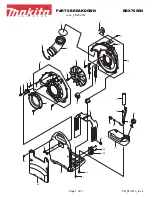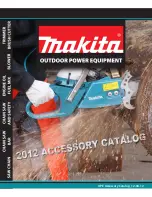
17
TROUBLESHOOTING
F
LOW
B
LOCK
C
HECK
I
SSUES
For every calibration and bump test of pump-driven instruments, the
SMART-CAL 360
will perform a flow block
check to ensure the sampling system of the instrument is sealed. This is done by restricting air flow to the instrument
and checking if the built-in flow block error message of the instrument is triggered. This is no different than manually
checking the instrument for flow block by blocking the inlet with a finger.
If the flow check fails, it is important to verify there is not an issue with either the instrument or instrument hose,
because either is more likely to have a compromised seal than the
SMART-CAL 360
.
To check the instrument, disconnect the instrument hose and press and release the A button to return to the working
display. First, make sure there is no buildup of dirt or debris on the inlet fitting. If there is, that could cause the
connection between the instrument hose and the inlet to not seal properly. Clean the fitting if necessary. If the
fitting looks good, place a finger over the inlet of the instrument. Within 5 seconds, a flow blocked message should
appear on screen. If that message does not appear, or if it takes a significant amount of time, the sampling system
of the instrument isn’t sealed properly.
If the instrument shows the flow block message properly, check the instrument hose by attaching it to the instrument
as you normally would, and disconnecting the end of the hose that is attached to the station. Perform the same
flow block check as outlined above by blocking the end of the hose. If a flow block message is not achieved, replace
the instrument hose.
C
OMMUNICATION
I
SSUES
If communication issues are experienced between the
SMART-CAL 360
and the instrument, try the following steps.
Contact SENSIT Technologies for assistance if issues persist.
1. Ensure that nothing is blocking the space between the IR window on the side of the station and the instrument,
such as any tubing, gooseneck, carrying case strap, etc.
2. Ensure there is no dirt buildup or other debris on the IR window on either the station or instrument.
3. Rule out interference from overhead fluorescent light sources (if applicable) by temporarily covering the top of
the station and instrument.




































